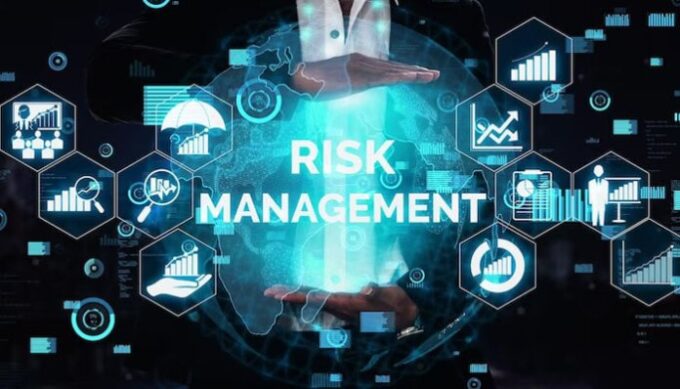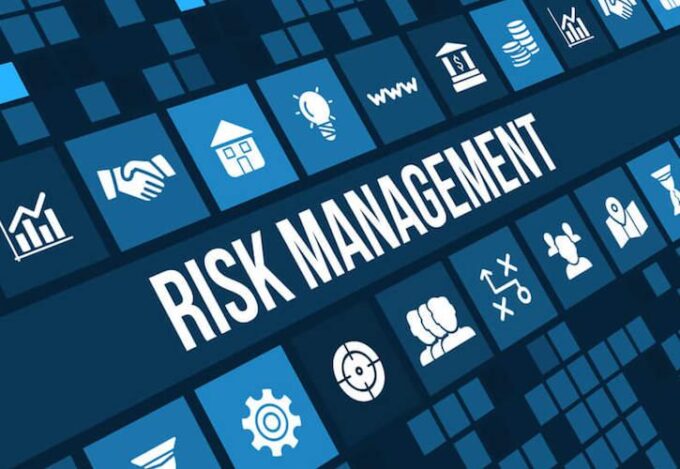For traders seeking substantial returns on their investments, the allure of achieving 10x growth can be undeniably tempting. However, the path to success is fraught with uncertainties and potential pitfalls. As any experienced trader attests, effective risk management is the key to pursuing such extraordinary returns.
In this comprehensive guide, we will delve into the crucial role of risk management in a trader’s journey toward 10x returns. By understanding the principles, strategies, and best practices of risk management, you can confidently navigate the volatile waters of the financial markets and optimize your potential for success.
I. The Significance of Risk Management

Risk management identifies, assesses, and mitigates potential risks that could impact your investments. It serves as a protective shield, shielding your capital from excessive losses and ensuring stability amidst market fluctuations.
Pursuing 10x returns demands a fine balance between risk and reward, and effective risk management is the linchpin ensuring your journey remains sustainable and profitable. Some education systems help build decision-making abilities and better understand potential investment opportunities.
II. Identifying and Assessing Risks
- Market Risk: Market fluctuations and unexpected movements can impact the value of your investments. Understanding different market risks, such as systematic and unsystematic risks, enables you to assess the potential impact on your portfolio and make informed decisions.
- Sector-Specific Risk: Certain industries or sectors may face unique challenges affecting your investments. Conduct thorough research and analysis to identify potential sector-specific risks and adjust your portfolio accordingly.
- Currency and Interest Rate Risk: For traders involved in global markets, currency fluctuations and changes in interest rates can significantly impact returns. Learning hedging strategies that can help manage these risks and safeguard your investments.
- Liquidity Risk: Investments that lack sufficient liquidity can be challenging to sell quickly at desired prices, potentially leading to losses. Diversifying your portfolio and monitoring liquidity can mitigate this risk.
For UAL stocks, factors such as fuel prices, competition, and travel demand play a crucial role. For WMG stocks, the company’s financial performance, streaming trends, and artist roster are key factors. You can use applications to conduct a thorough risk assessment, make more informed decisions and develop a suitable risk management plan.
III. Building a Robust Risk Management Strategy

- Diversification: A cornerstone of risk management, diversifying your investments across various asset classes, industries, and geographical regions helps spread risk and minimizes the impact of any single investment’s performance.
- Setting Realistic Goals: With the help, you can establish clear and achievable investment goals aligned with your risk appetite and time horizon. Pursuing 10x returns requires patience and a long-term perspective.
- Determining Risk Tolerance: Assess your risk tolerance to ensure that your investment strategy aligns with your financial capacity and emotional resilience during periods of volatility.
- Utilizing Stop-Loss Orders: Implementing stop-loss orders for each trade can limit potential losses by automatically selling an asset once it reaches a predetermined price level.
- Position Sizing: Calculating appropriate position sizes based on risk parameters ensures that no single trade significantly impacts your overall portfolio.
- Stress Testing: Simulate potential market scenarios to gauge how your portfolio may perform under adverse conditions. Stress testing helps identify vulnerabilities and refine your risk management strategy.
IV. Monitoring and Adapting

Regular Portfolio Review: Consistently monitor your portfolio’s performance, reassess risk levels, and adjust allocations to maintain an optimal risk-to-reward balance.
Staying Informed: Keep abreast of market developments, economic indicators, and relevant news. Being well-informed enables you to make timely adjustments to your risk management approach.
Contingency Planning: Develop contingency plans to address unexpected events that may impact your investments. Having a plan in place can prevent panic-driven decisions during market turbulence.
By staying informed about developments affecting WMG stocks, traders can make timely decisions to protect their investments and capitalize on emerging opportunities.
V. Distinguishing Between Speculation and Risk Management

Understanding the difference between speculation and risk management is crucial for traders. Speculation is a gamble on uncertain outcomes, often based on gut feelings or market predictions without a solid strategy. On the other hand, risk management is a systematic method to protect investments by identifying, assessing, and mitigating potential risks. It aims to minimize losses and safeguard capital, ensuring sustainable trading.
Risk management requires comprehensive research, data analysis, and setting clear risk parameters. Traders should not rely solely on speculation but should focus on creating robust risk management plans that align with their investment goals and risk tolerance. This disciplined and strategic approach can enhance the likelihood of achieving desired returns.
VI. Psychological Aspects of Risk Management
The psychological aspects of risk management are equally important. Emotions like fear, greed, and impulsiveness can influence decision-making, leading to irrational risk-taking or premature exits from positions. Traders need to maintain emotional discipline, cultivate a long-term perspective, and develop resilience to short-term setbacks. Self-awareness is key to recognizing personal biases that can distort risk perceptions.
In conclusion, a combination of psychological fortitude and sound risk management strategies can help traders navigate the volatile financial markets effectively. Mastering these aspects is essential for sustained success in trading.
VII. Case Studies of Risk Management in Action

The 2008 Financial Crisis: Examine how risk management practices allowed some investors to navigate the global financial crisis with limited losses while others faced significant setbacks.
Successful Hedge Fund Strategies: Study the risk management strategies adopted by successful hedge funds, which have achieved remarkable returns while minimizing risks for their clients.
VIII. Embracing Risk to Reap Rewards
Understanding Risk-Reward Trade-Off: Recognize that higher potential returns often come with increased risk. Calculate the risk-reward trade-off for each investment opportunity.
Avoiding Emotional Trading: Emotional decision-making can lead to impulsive actions and irrational risk-taking. Staying disciplined and adhering to your risk management plan is essential for long-term success.
Now You Know!
In the pursuit of 10x returns, effective risk management is an indispensable aspect of a trader’s journey. It shields investments from potential losses and provides the necessary stability and discipline to optimize the pursuit of significant gains. These strategies are vital when trading high-yield stocks such as UAL and WMG.
By identifying and assessing risks, building a robust risk management strategy, continuously monitoring and adapting your approach, and embracing risk with calculated precision, you position yourself for a successful and sustainable trading experience. Remember that risk is an inherent part of investing, and prudent risk management is the key to unlocking the rewards of the financial markets.









